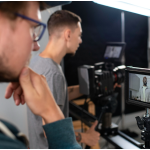1. Define Your Creative Goal
Before browsing, ask yourself:
-
What type of project am I working on? (Music, video, podcast, game, etc.)
-
Do I need background music, sound effects, video overlays, or all of the above?
-
What’s the mood or aesthetic I’m going for — cinematic, upbeat, dark, minimal?
When you’re clear about your goal, choosing becomes much easier.
2. Pay Attention to File Formats
Make sure the pack includes formats that are compatible with your tools:
-
WAV or MP3 for audio
-
MP4, MOV, or ProRes for video
-
Loop-ready files if you’re using a DAW (like Ableton or FL Studio)
Look for info on resolution, bit rate, and length to ensure quality.
3. Listen and Watch Previews
Don’t rely on descriptions alone. A good sample provider will let you preview the content — even if it’s watermarked. Take time to listen to loops, hear the tone, and watch demo videos so you know exactly what you’re getting.
4. Look for Royalty-Free Licensing
Always check the licensing terms. The best sample packs are royalty-free, which means you can use them in both personal and commercial projects — YouTube videos, tracks, ads, podcasts, and more — without paying extra or worrying about copyright strikes.
5. Balance Variety with Focus
Some packs offer 300+ files, but if they’re scattered across many styles, you might struggle to find what fits. A curated pack focused on one mood or genre (e.g., “Ambient Loops” or “Cinematic Glitches”) might actually save you time.
🔍 Bonus Tip: Start Small and Build
If you’re just starting out, grab one or two focused packs and experiment. As your style evolves, build a library of assets that match your personal creative voice. You’ll thank yourself later when you’re on a deadline and need the perfect hit, swoosh, or drone.


